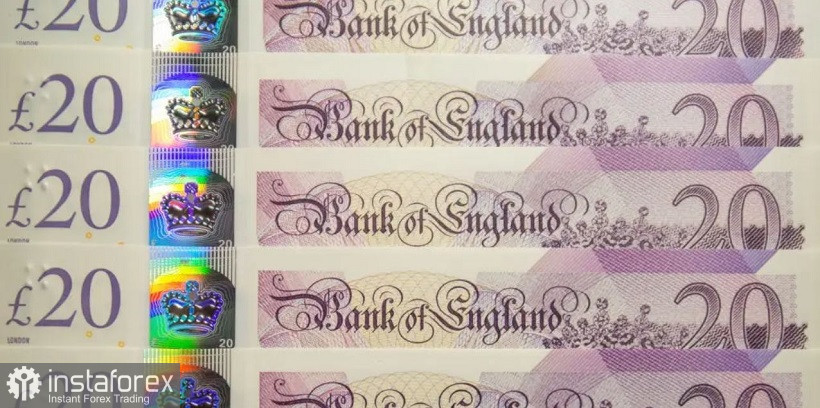The GBP/USD pair tested the 13th figure again. Last week, the GBP/USD bears tried to gain a foothold in this price area, but failed: bulls seized the initiative, taking advantage of Friday's weakening of the greenback. And yet the downward trend is still in force. Upward pullbacks are corrective and therefore short-term. Therefore, short positions on corrective surges still look relevant, despite the dollar's unstable state ahead of the September Federal Reserve meeting.
The nearest and so far the main support level is at 1.1350, which is the lower line of the Bollinger Bands indicator on the daily chart. It is noteworthy that the last time the pair was at such price bottoms was back in 1985. After that, for 37 years, the pound kept the defense even in the most difficult circumstances for itself. We will not delve into history, it is enough to recall the last 5-6 years. For example, reacting to the results of the historic referendum on the UK's withdrawal from the EU, the British pound fell to the level of 1.2000 (while the peak was previously recorded in the area of the 50th figure). In the wake of the coronavirus crisis, the GBP/USD pair fell to a target of 1.1410. However, the price did not stay at this level for long: almost immediately, bulls became more active, which provoked the pair's return to the area of 20 figures.

The current downward trend is protracted. Take a look at the monthly chart: the price has been consistently declining since March this year. Of course, GBP/USD bulls can chalk up successful counter attacks – for example, they were able to set up 400-point retracements in May and July. But looking at the situation as a whole, one can come to an obvious conclusion: the pair is within the framework of a large-scale downward trend. If the price was around the 34th mark in March, today the bears are trying to settle in the area of the 13th price level. Two thousand points - this is the result of the six-month downward march.
At the moment, many experts (in particular, the UOB Group) say that the GBP/USD pair will shift to the range of 1.1000-1.1300 in the medium term. Some of their colleagues (including currency strategists at Scotiabank, BBH, MUFG) warn of a deeper fall in the British currency - up to 1.0520. Such pessimism regarding the prospects for GBP/USD is due to several fundamental reasons. Experts, in particular, point to the UK budget and current account deficit, the worsening energy crisis and high risks of recession amid inflationary growth. The role of a kind of anchor for GBP/USD is also the new British Prime Minister Liz Truss - she can also put significant pressure on the British currency, given the ideas in the field of taxation, which she declared during the election race.
Let me remind you that disappointing data on the growth of the British economy were published last week. At the time of release, the pound ignored the report (taking advantage of the general weakening of the dollar), but, as they say, everything has its time. The report came out in the red zone, so a priori it could not be ignored by the market. Today's decline in the British currency is partly the merit of this release. According to published data, the volume of GDP in the UK increased in July by only 0.2% in monthly terms, while most experts expected a more significant increase - by 0.5%. In annual terms, the indicator came out at the zero level. The volume of industrial production declined altogether - by 0.1% (m/m). The volume of production of the processing industry increased minimally (0.1%). I repeat - all the published indicators fell short of the forecast levels.
Last Friday, the "red color" received another release, no less important for the British currency. We are talking about weak data on the volume of retail sales in the UK. All components of the report came out in the negative area. Core sales on a monthly basis fell by 1.6%, in annual terms - by 5.4%. Excluding fuel costs, the indicator fell to -1.6% m/m, -5.0% y/y. The disappointing sales report was another sign that the country's economy is slipping into recession.
Such a fundamental background contributes to a further decline in GBP/USD. It is obvious that such ambitious goals as 1.05 or 1.10 will not be achieved in the medium term. But at the same time, such targets as 1.1350 and 1.1300 look quite plausible and achievable.
Here it is also necessary to recall that the Bank of England will hold a regular meeting on September 22, as a result of which the central bank will most likely increase the interest rate by 75 points. On the one hand, this is a factor that will allow the pound to win back part of the lost positions. But, in my opinion, high interest rates are no longer a guarantee of a stable strengthening of the currency - especially if macroeconomic indicators continue to disappoint. Therefore, it is still advisable to use any upward rollbacks for the GBP/USD pair to open short positions. Downward targets are 1.1350 (bottom Bollinger Bands on the daily chart) and 1.1300 (bottom Bollinger Bands on the weekly chart).





















